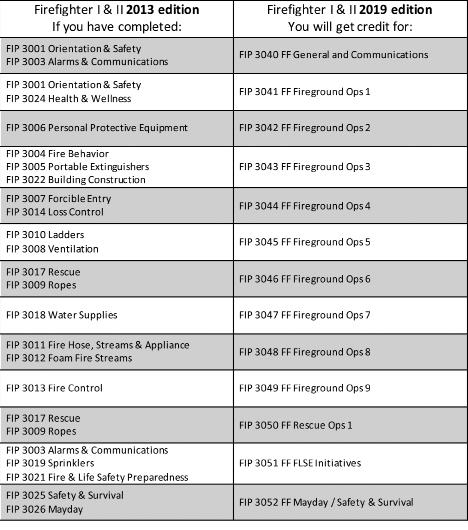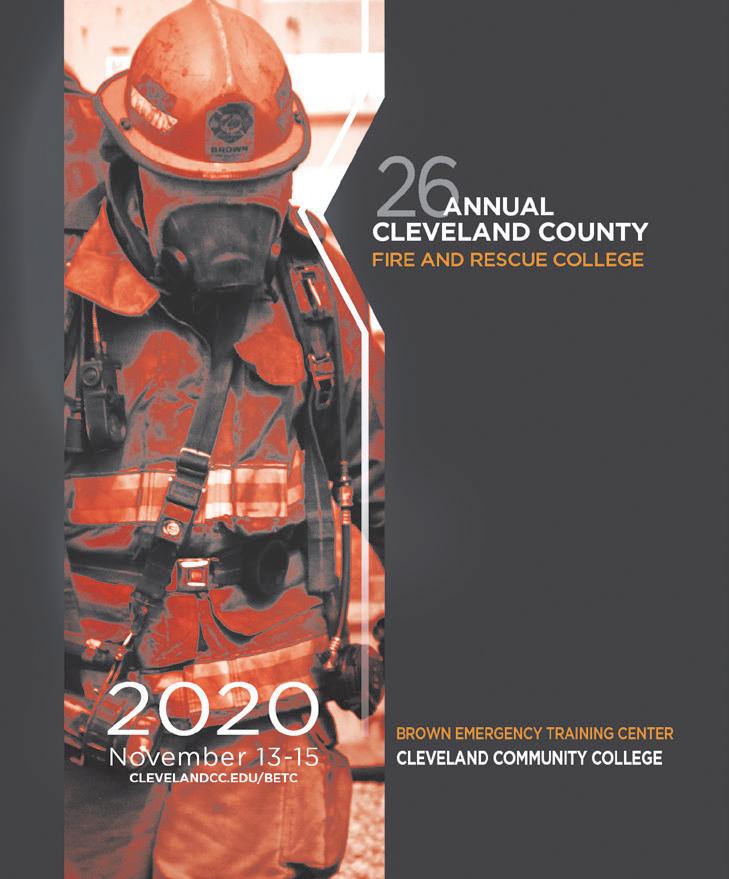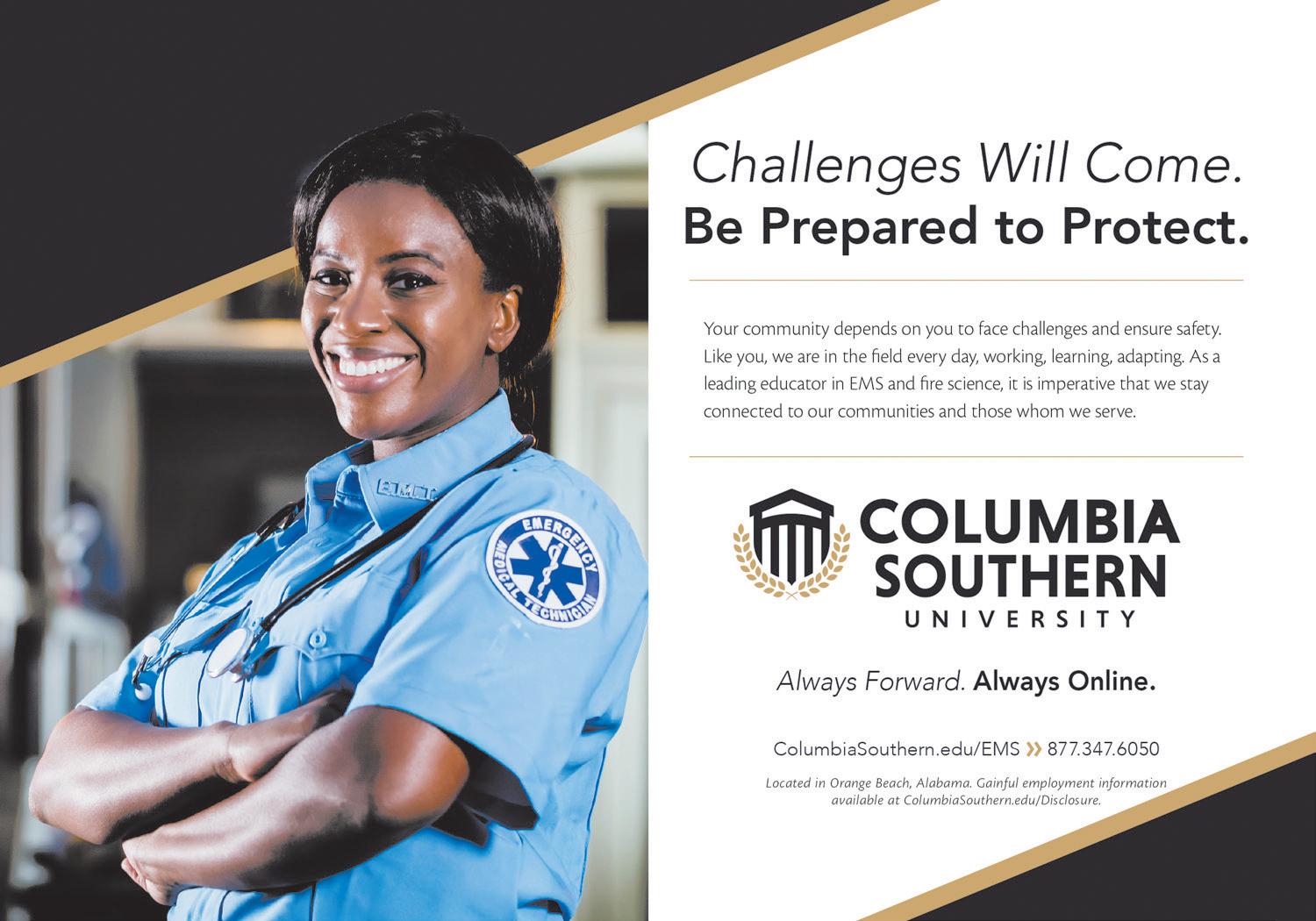
7 minute read
Education
Educastion Changes to North Carolina’s
Approximately every five years, the National Fire Protection Association (NFPA) releases updates to their consensus Richard Carroll standards. NFPA 1001: Standard for Fire Fighter Professional Qualifications, was last updated in 2013, so last year the 2019 edition of the standard. Once the standards are released, the publishers of firefighting textbooks and manuals begin updating and correlating their products to ensure they meet the new standard. Next, the entities in each state that are tasked with issuing credentials associated with those qualifications get to work on updating their own programs to ensure they line up with the latest standards.
Advertisement
In North Carolina, staff at the Office of the State Fire Marshal (OSFM) work under the direction of the Certification Board and the North Carolina Fire and Rescue Commission. Until recent years, I never understood the innerworkings of these entities, but here is an overly simplistic synopsis of the process.
The Certification Board makes decisions on rules, policies, and procedures as they pertain to fire and rescue certifications in North Carolina. Where required, these decisions are then presented to the Fire and Rescue Commission. The commission examines the decisions and officially accepts or rejects them. It is then up to the OSFM staff that work under that umbrella to administer the rules, policies and procedures of the commission. So essentially, when you hear someone make the statement that “the state is sticking it to us again” remember they are only carrying out the direction of the Certification Board and the Fire and Rescue Commission (F&R Commission). These board members are appointed by various fire and rescue associations, city and county associations, and the public at large; or are appointees of specific elected officials. You can find all these details on the NCOSFM website under “Fire and Rescue Commission” and then look for a tab labeled “Commission and Boards, Meetings and Policies.”
So, What’s New?
With the 2019 update, the firefighter certification program is taking on an overhaul in its structure and a few items that will be different than the previous format. As many of you may already be aware, a little concern was spread about the decision to combine some of the shorter classes into “blocks.” Let’s break this down and see what this really means to the

upcoming firefighters seeking certification. Prior to this update, the 2013 Firefighter One and Two program required that you complete 21 individual courses that ranged from six to 36 hours — this does not include the hazardous materials and medical requirement; more about that later. The 2019 Firefighter One and Two program released has 13 courses ranging from 24 to 40 hours.
It has always been the practice of the Certification Board and F&R Commission to reduce the negative impact on firefighters as it comes to certification changes. One of these measures is to approach changes with timeframes and crossovers to keep firefighters from having to duplicate efforts and prolong completion of their certification. If you are currently or have had classes in the past, but have not completed your certification, “single” classes can continue to be offered until December 31, 2021. If I were a firefighter in the middle of this, I would seek out every opportunity to complete my certification. I have a feeling that as we get closer to the end of 2021, it will get harder to find the older courses as delivery agencies begin to transition to the new courses that became active on July 1 of this year. In the event that you have single classes, here is a crossover chart to help you ensure that you complete the single classes that will be merged into larger classes. (Please note that the courses only crossover from the 2013 standard to the 2019 standard): *For either standard, you will also have to complete Hazardous Materials Operations and Emergency Medical Care (or an approved medical credential like EMTBasic).
Changes in Testing
A couple of years ago, practical testing went to what is referred to as 100 percent testing. Simply put, every manipulative skill taught had to be tested, where before the delivery agency would pull two or three at random to be tested for a class. With the new firefighter classes, 100 percent testing will still be in place, but will be scenario based and multiple skills will be tested at the same time. For example, for Fire Ground Ops 5, students will be taught individual skills to select, carry, throw and climb a ladder; then cut a ventilation hole on a pitched roof. For testing, the student will carry out the evolution, being tested on each skill performed in that evolution. This will greatly speed up the testing portion of the class and allow more time to be devoted to coaching and practicing skills.
Written tests will also have two differences than the previous update. First, when I was taking my certification classes — we won’t talk about how long ago that was — I remember the instructors I had talking about the curriculum coming from about a dozen manuals. When I became an instructor, they had reduced it down to about five. The 2013 had three different texts an instructor could choose from. The upside to having a choice of firefighter books, is the freedom of choices. However, the downside is different terminology and theories between books. This makes written exams a real pain because questions could come from any of the books. I cannot imagine the headaches that the validation committees and OSFM staff had in trying to ensure that each question was referenced in all three books. Finally, the 2019 gives us a single source and exam
questions that will come from only that source. *And the crowd roars!
The second difference is going to be separate Firefighter One and Two exams. While North Carolina is not going to return to credentialing Firefighter One, delivery agencies must begin testing both levels separately. This will only apply to the courses that have Firefighter Two objectives. Classes with only Firefighter One content will only have one test.
The Source
The firefighter manual adopted as the sole source is the “Fundamentals of Fire Fighter Skills and Hazardous Materials Response” 4th edition published by Jones and Bartlett. Because the text does not include a chapter on emergency medical care, a separate book was adopted to deliver emergency medical care objectives. It is called “First Aid, CPR, and AED Standard” 7th edition. Jones and Bartlett has a North Carolina “bundle” with a single ISBN to make ordering your material easier, it is called the “N.C. Volunteer Firefighter Hazardous Materials and First Aid Bundle” ISBN: 9781284207552.
My Two Cents
As they say, opinions are like …. well, you know. So, here is mine. I am very grateful to the folks that sit on these boards and that are on staff at OSFM that work to make North Carolina a leader in fire and rescue training. Having a single source is a gamechanger for instructors in the most positive context. Jones and Bartlett deliver a text with a clear delineation of the two levels of firefighter, that is new for them and will be very beneficial for instructors and students. Overall, I would say that we are continuing to move in a positive direction overall. With that said, we used the new text in our last academy class and found a few things that make me wish for the old trusty IFSTA “Essentials of Firefighting” manual.
First, everything is in one book including a chapter on Emergency Medical Care. Second, the Jones and Bartlett text does not have even a mention of a British thermal unit (BTU) or calorie. The new text also points out that controlling the size and number of the exhaust openings in one- and two-family dwellings does not make a difference during positive pressure ventilation operations. Yes, I know that comes from some UL testing, but most veteran firefighters, including myself, will still disagree. Besides, if it doesn’t really matter, then why contradict a solid practice that has been taught for the last 20 plus years? But I guess my biggest heartburn with the text is that it also states that sounding floors is unreliable and a dangerous practice that should be suspended. I understand the context in which the statement was made but, a statement like that can cause some to question another long standing and critical skill of sounding floors and roofs. The practice is still included on the “skill sheets” used to grade students’ practical skills.
With all that said, certification updates always bring changes. I feel like most of the changes for this update are positive. However, I wonder if they can recall textbooks like they can automobiles?
Richard Carroll has over 25 years of experience serving in volunteer, career, and combination departments. Teaching for the last 13 years, he is currently employed at Cleveland Community












